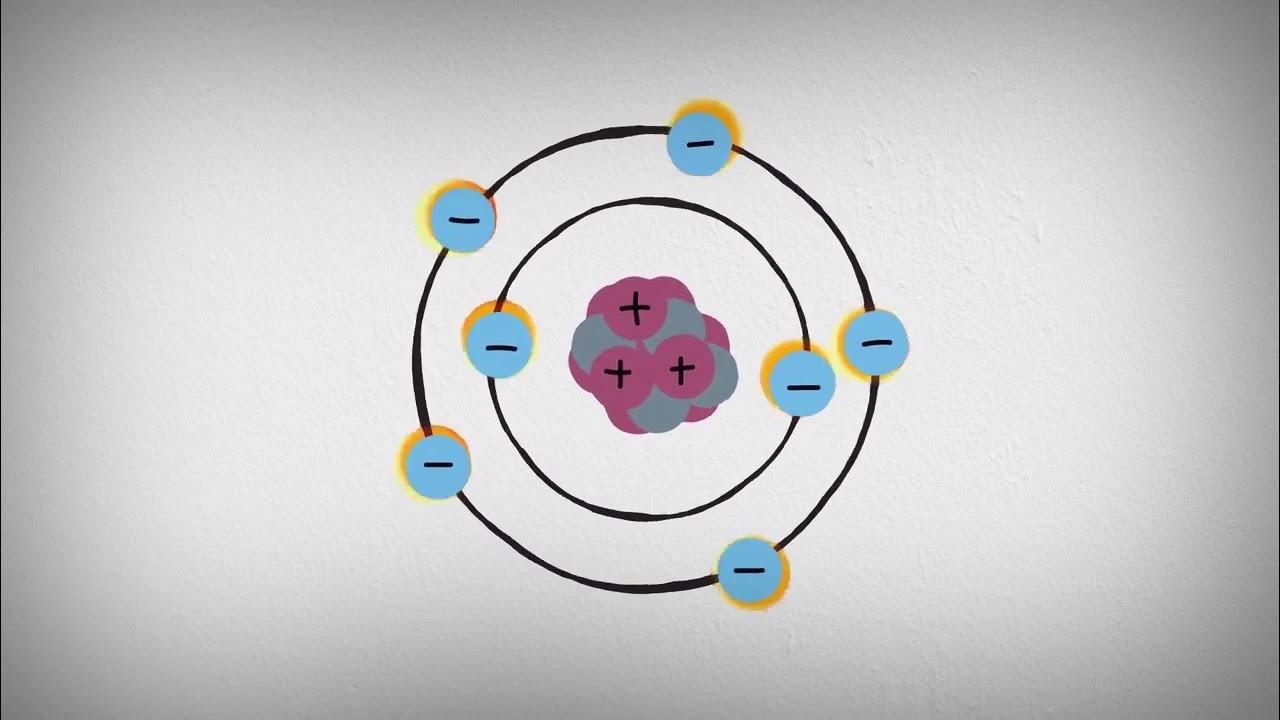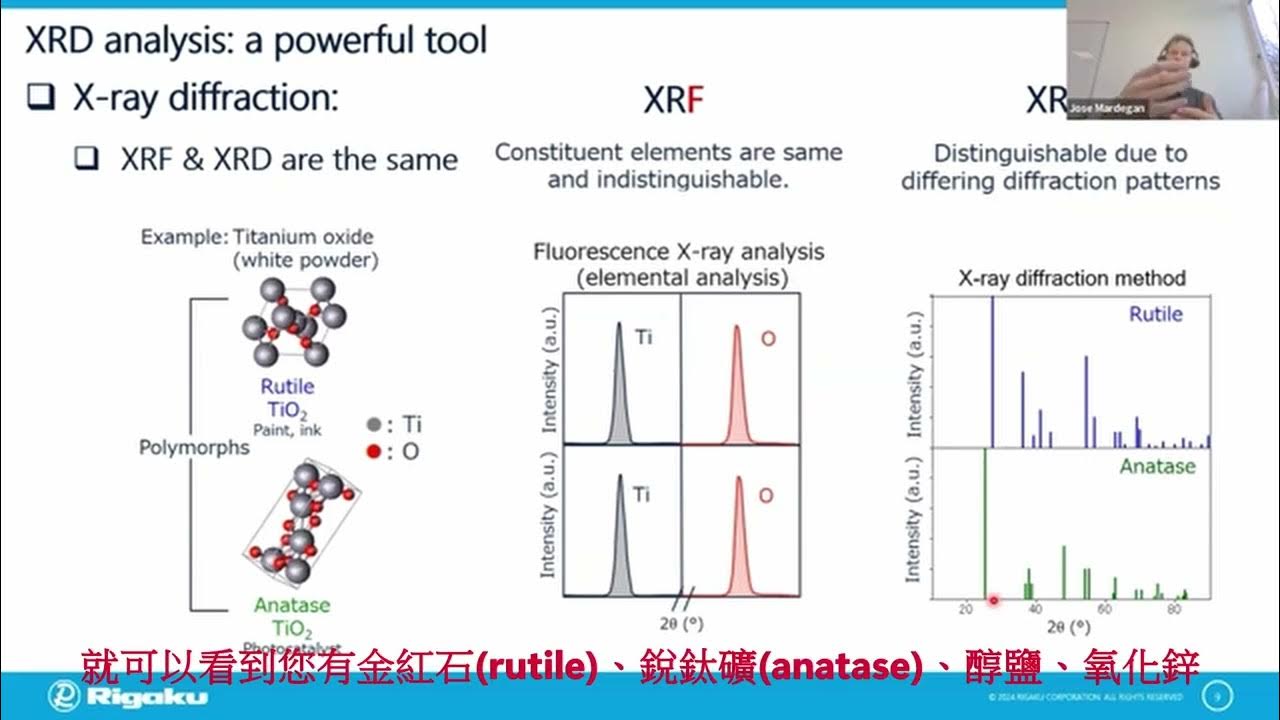Prinsip Kerja XRD (X-Ray Diffraction) | Hukum Bragg | Bahasa Indonesia
Summary
TLDRThis video explores the principle of X-ray diffraction (XRD), explaining how X-rays interact with materials at the atomic level. When exposed to X-rays, atoms in a solid material absorb energy and scatter the X-rays. This scattering can lead to constructive or destructive interference, creating diffraction peaks that reveal valuable insights into the material’s structure. The video covers the fundamentals of Bragg's Law, which links diffraction patterns to atomic spacing, and demonstrates how XRD can be used to analyze the crystal structure, phase, and composition of materials.
Takeaways
- 😀 X-ray diffraction (XRD) is a technique used to study the atomic structure of materials.
- 😀 Every material is made up of atoms, which are arranged in an orderly manner in crystals.
- 😀 When exposed to X-rays, the electrons in atoms absorb energy, causing elastic scattering if the energy is not enough to eject electrons.
- 😀 The scattered X-rays interact with each other. If the waves are in phase, constructive interference occurs, leading to a diffraction peak.
- 😀 If the waves are out of phase, destructive interference happens, and no diffraction peak is detected.
- 😀 The diffraction pattern is unique to each material and is influenced by the arrangement of atoms in the crystal.
- 😀 Bragg's Law explains the relationship between the diffraction angle, the wavelength of X-rays, and the spacing between atoms in the crystal.
- 😀 The formula for Bragg's Law is: 2d sin θ = nλ, where d is the atomic spacing, θ is the diffraction angle, λ is the X-ray wavelength, and n is the order of the diffraction peak.
- 😀 XRD helps in analyzing material properties such as crystal structure, phase composition, and chemical composition.
- 😀 The XRD experiment involves an X-ray tube (source) and a sensor that detects the diffraction pattern, with measurements taken at various angles to form a complete analysis.
Q & A
What is the basic principle behind X-ray diffraction (XRD)?
-X-ray diffraction (XRD) works based on the interaction of X-rays with the electrons in the atomic structure of a material. When a solid material is exposed to X-rays, the X-rays are scattered by the electrons, creating a diffraction pattern that can reveal information about the material's structure.
What happens when a solid material is exposed to X-rays?
-When a solid material is exposed to X-rays, the energy from the X-rays is absorbed by the electrons in the atoms of the material. If the energy is not enough to eject electrons, the X-rays are scattered back with the same energy, a phenomenon known as elastic scattering.
What is elastic scattering in X-ray diffraction?
-Elastic scattering refers to the process where X-rays are scattered by electrons without any loss of energy. The scattered X-rays maintain the same energy as the incident X-rays, and this scattering is characteristic of the material's atomic configuration.
How does interference play a role in X-ray diffraction?
-Interference occurs when multiple waves of scattered X-rays combine. If the waves are in phase, constructive interference occurs, reinforcing the intensity and creating a diffraction peak. If they are out of phase, destructive interference occurs, leading to no detectable signal.
What is the significance of the diffraction peaks detected during XRD?
-The diffraction peaks in XRD are crucial as they indicate constructive interference, which occurs at specific angles. These peaks provide valuable information about the material's atomic arrangement, crystal structure, and other physical properties.
What is the role of the sensor in X-ray diffraction experiments?
-The sensor in X-ray diffraction experiments detects the intensity of the scattered X-rays. It moves along with the X-ray tube to different angles, capturing diffraction peaks when constructive interference occurs. The data is then used to analyze the material's structure.
How does the XRD data help in material analysis?
-XRD data, in the form of a graph plotting intensity against angle, allows researchers to determine various material characteristics such as phase composition, crystal structure, and chemical properties. The specific angles of the diffraction peaks correspond to the material's atomic spacing.
What is the relationship between the atomic spacing and the diffraction angle in XRD?
-The relationship between atomic spacing (d) and diffraction angle (theta) is described by the equation 2d sin(theta) = n * lambda, where 'n' is an integer, 'lambda' is the wavelength of the X-rays, and 'd' is the spacing between atomic layers in the crystal.
What does the equation 2d sin(theta) = n * lambda represent in XRD?
-The equation 2d sin(theta) = n * lambda is known as Bragg's Law and is fundamental to X-ray diffraction analysis. It describes the conditions under which constructive interference occurs, leading to diffraction peaks. It is used to calculate atomic spacings and analyze crystal structures.
Why is Bragg's Law important in XRD analysis?
-Bragg's Law is important because it provides a mathematical framework for understanding when X-ray diffraction peaks will occur, helping researchers determine the precise arrangement of atoms within a crystal. By measuring diffraction angles and intensities, they can analyze the material's crystalline structure.
Outlines

هذا القسم متوفر فقط للمشتركين. يرجى الترقية للوصول إلى هذه الميزة.
قم بالترقية الآنMindmap

هذا القسم متوفر فقط للمشتركين. يرجى الترقية للوصول إلى هذه الميزة.
قم بالترقية الآنKeywords

هذا القسم متوفر فقط للمشتركين. يرجى الترقية للوصول إلى هذه الميزة.
قم بالترقية الآنHighlights

هذا القسم متوفر فقط للمشتركين. يرجى الترقية للوصول إلى هذه الميزة.
قم بالترقية الآنTranscripts

هذا القسم متوفر فقط للمشتركين. يرجى الترقية للوصول إلى هذه الميزة.
قم بالترقية الآنتصفح المزيد من مقاطع الفيديو ذات الصلة
5.0 / 5 (0 votes)






